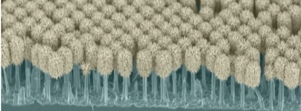World’s First Light-Seeking Nanorobots for Potential Biomedical Applications
- 領域
- Medical Devices
- Patent
- IP00588/IP00724
Key Problem and Market Opportunity
- It is challenging to make and design sophisticated nanorobots with advanced functions like sensing and responding to the environment stimuli
- Currently the only means to remotely control nanorobots is to incorporate ferromagnetic materials inside their bodies and guide their motion via external magnetic field
- Nanorobots have the potential to be injected into patients’ bodies, helping surgeons to remove tumors as well as enabling more precise engineering of targeted medications
Key Advantages of the Technology
- It is the world’s first nanorobot that can be propelled and controlled by UV as well as visible light
- The nanorbot is of a size similar to that of a red blood cell
- The development of nanorobots for biomedical applications has been a major trend of scientific research in recent years. It potentially open the door to new knowledge and treatments of diseases and development of new drugs
- With a novel nanotree structure, the nanorobots can respond to the light shining on it like moths being drawn to flames
Potential Product and Services
- Agent for active drug delivery
- Agent for supporting non-invasive surgery and nanofabrication
- Precision medicine and nano-machinery applications
Development Status and IP Strength
- US Patent Application No. 15/370,783
- PCT Application No. PCT/CN2016/110024
- Device prototype is available in laboratory scale






